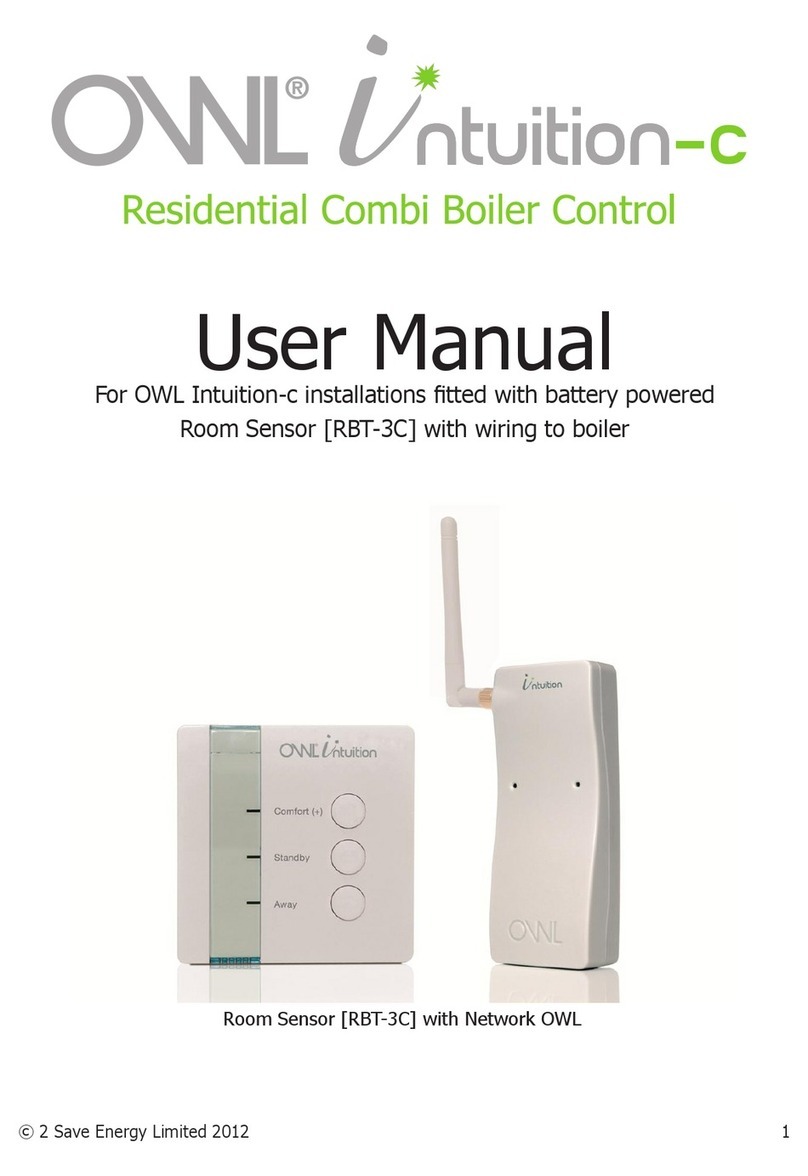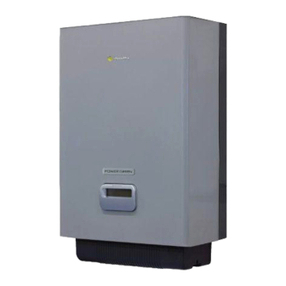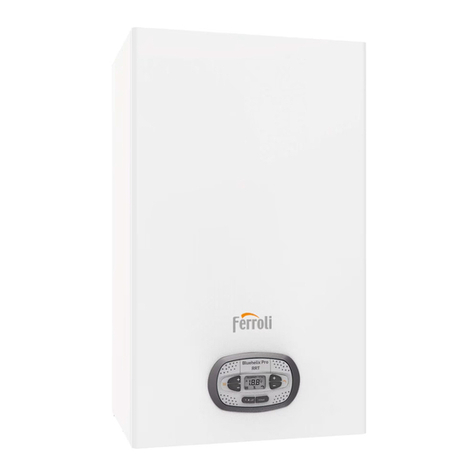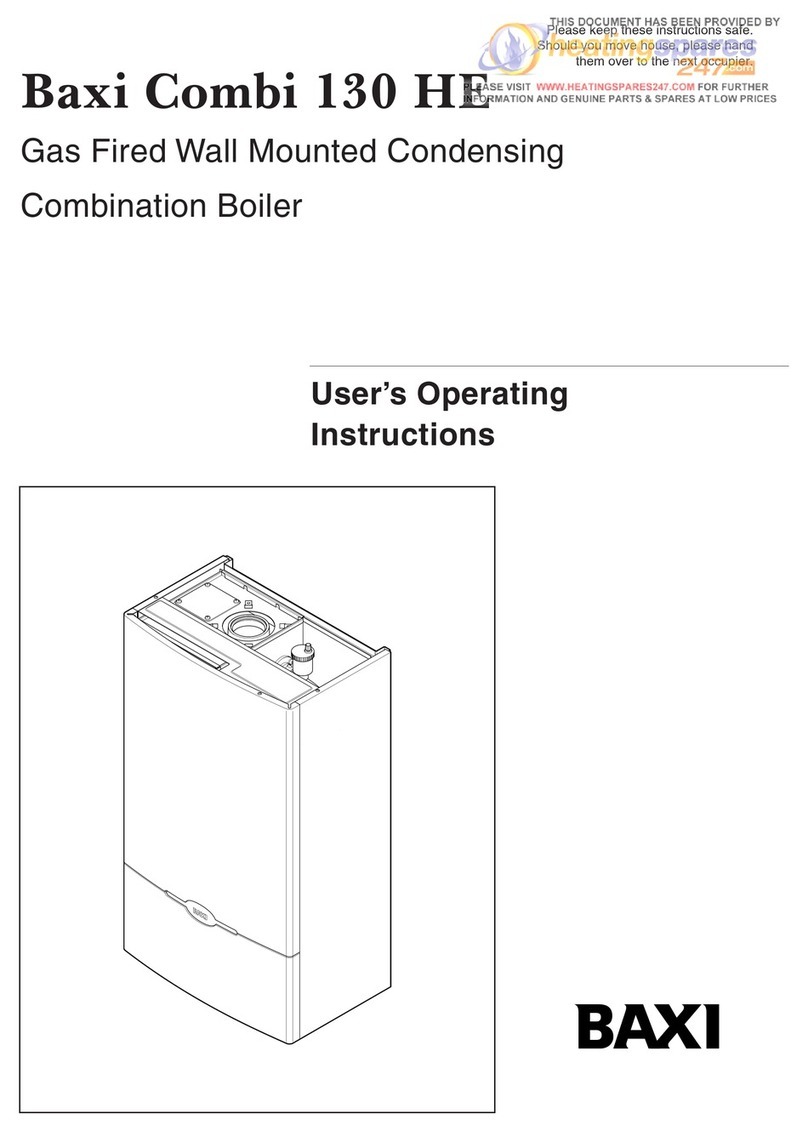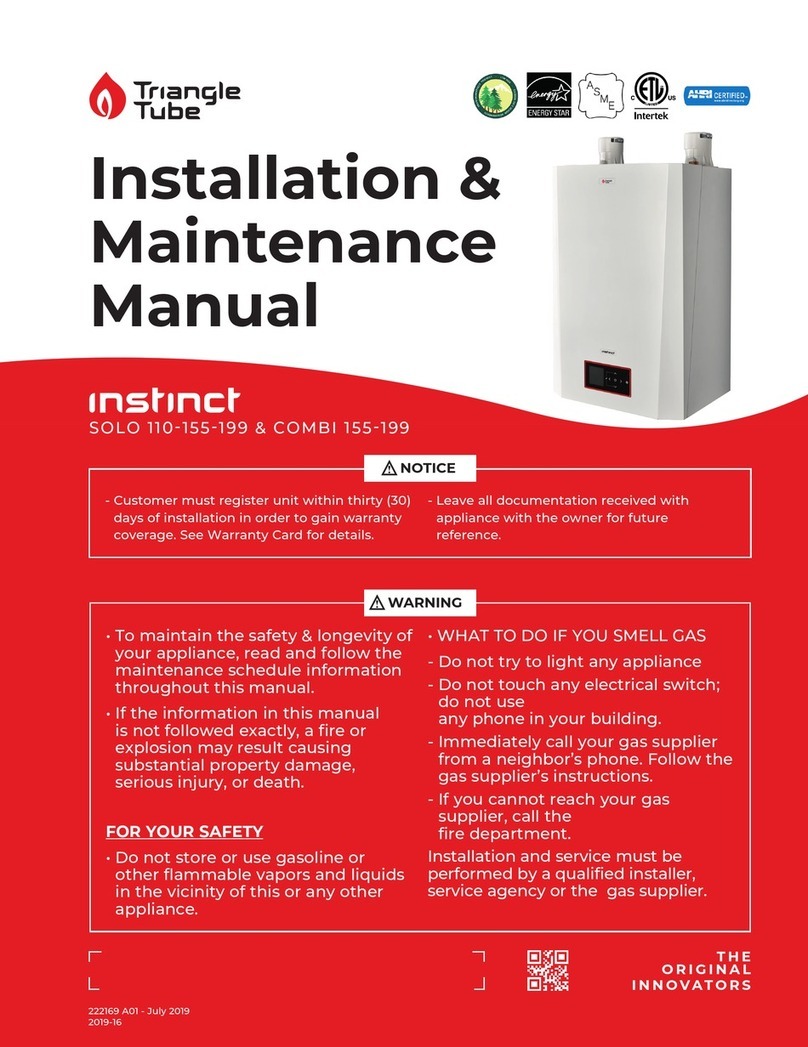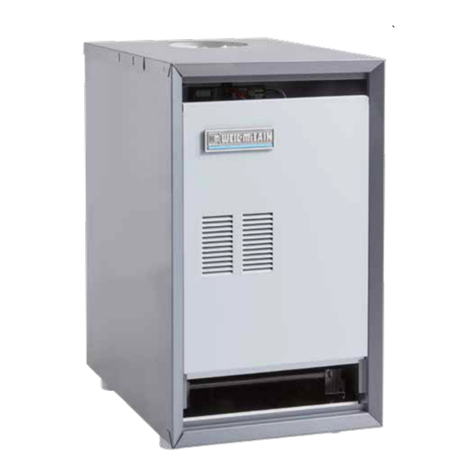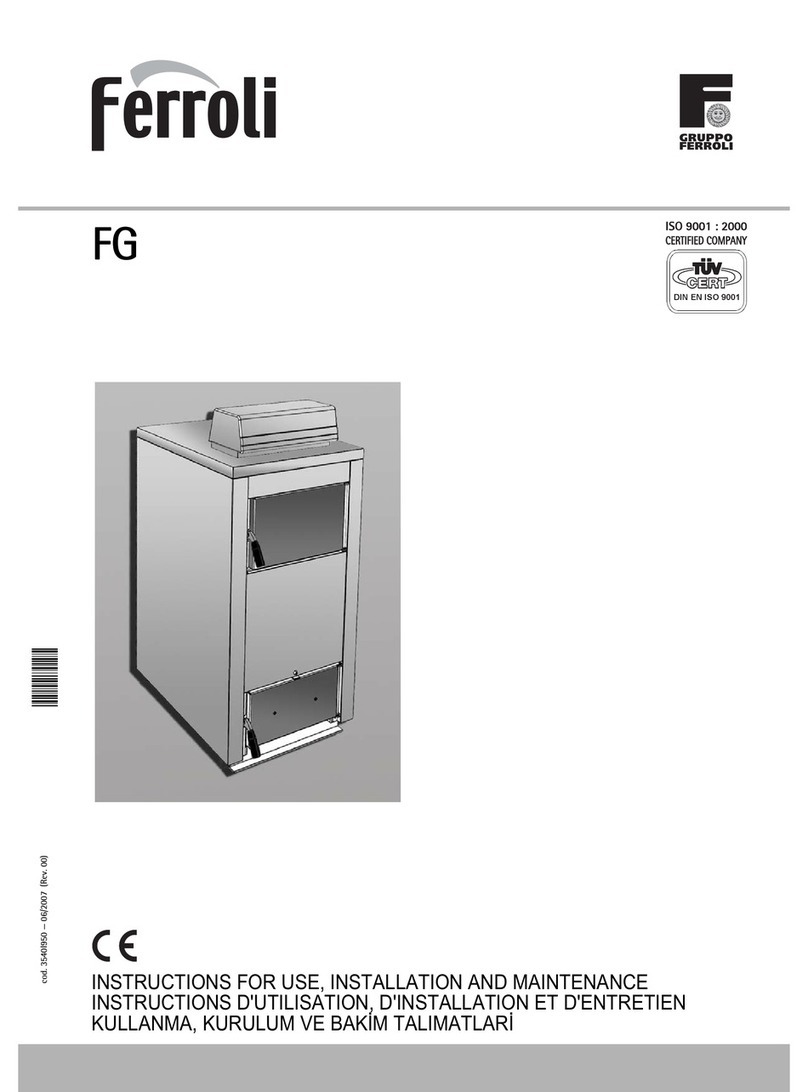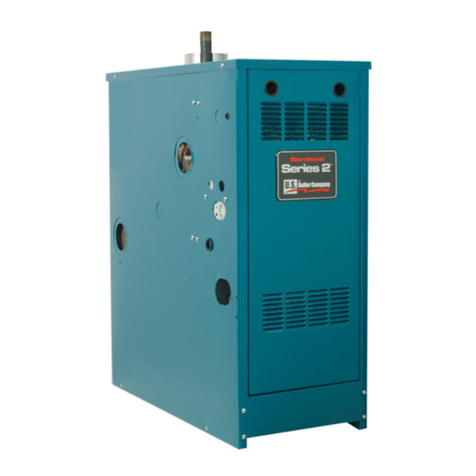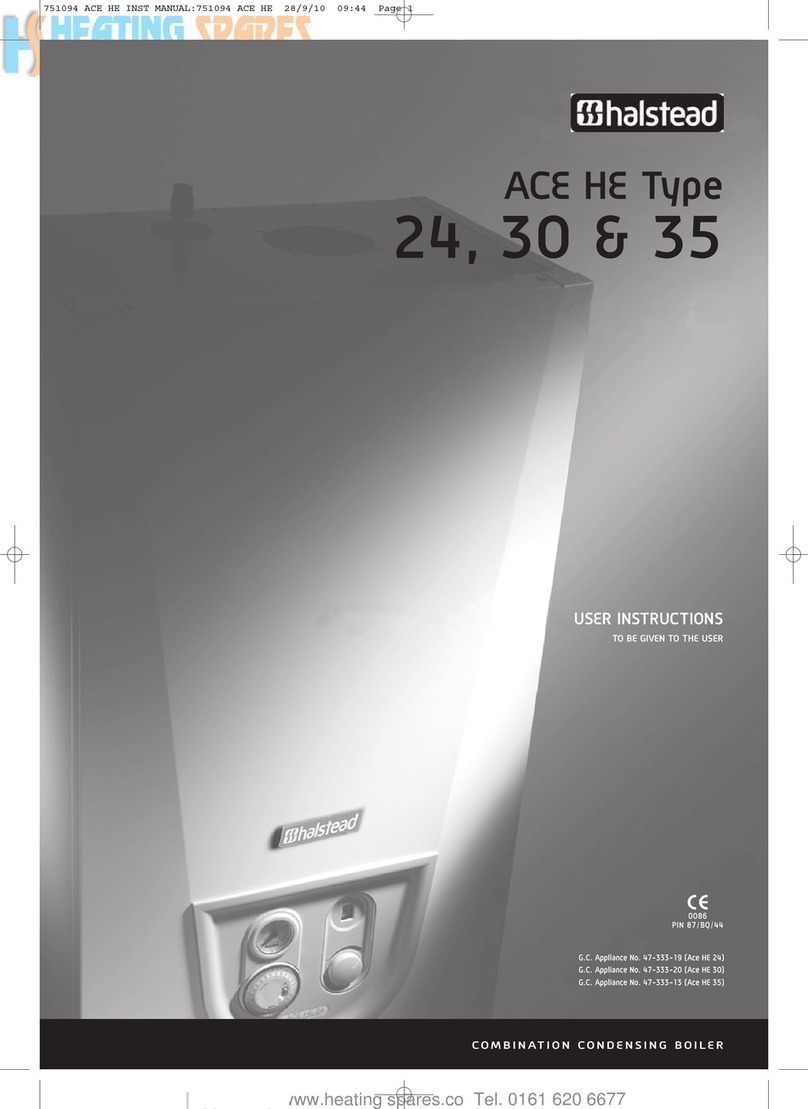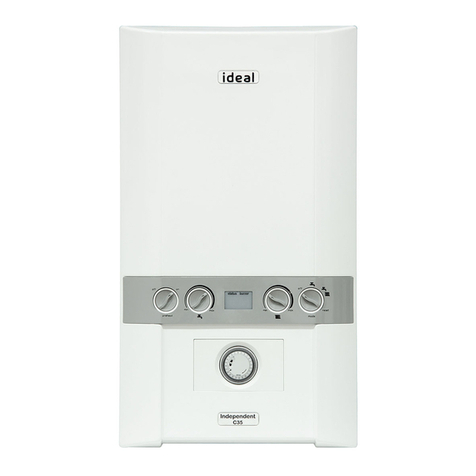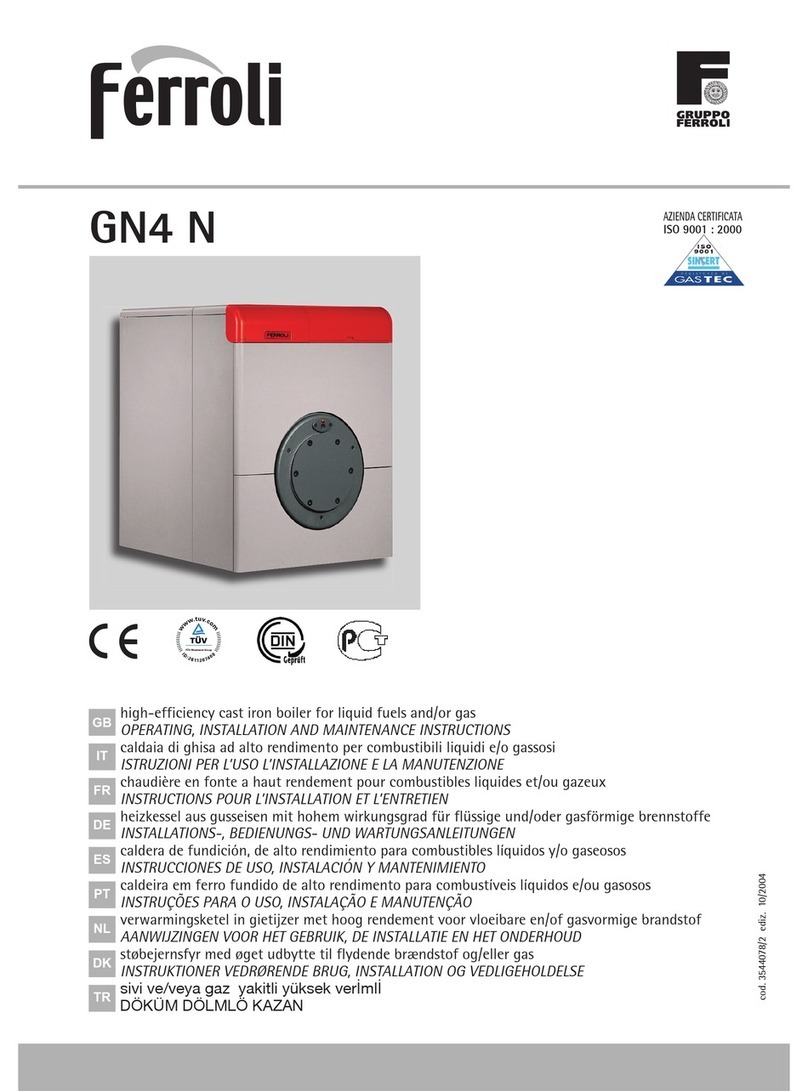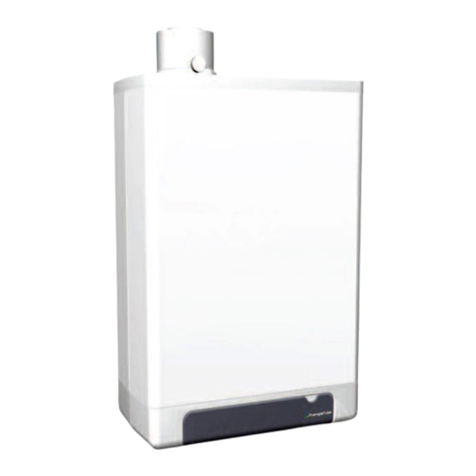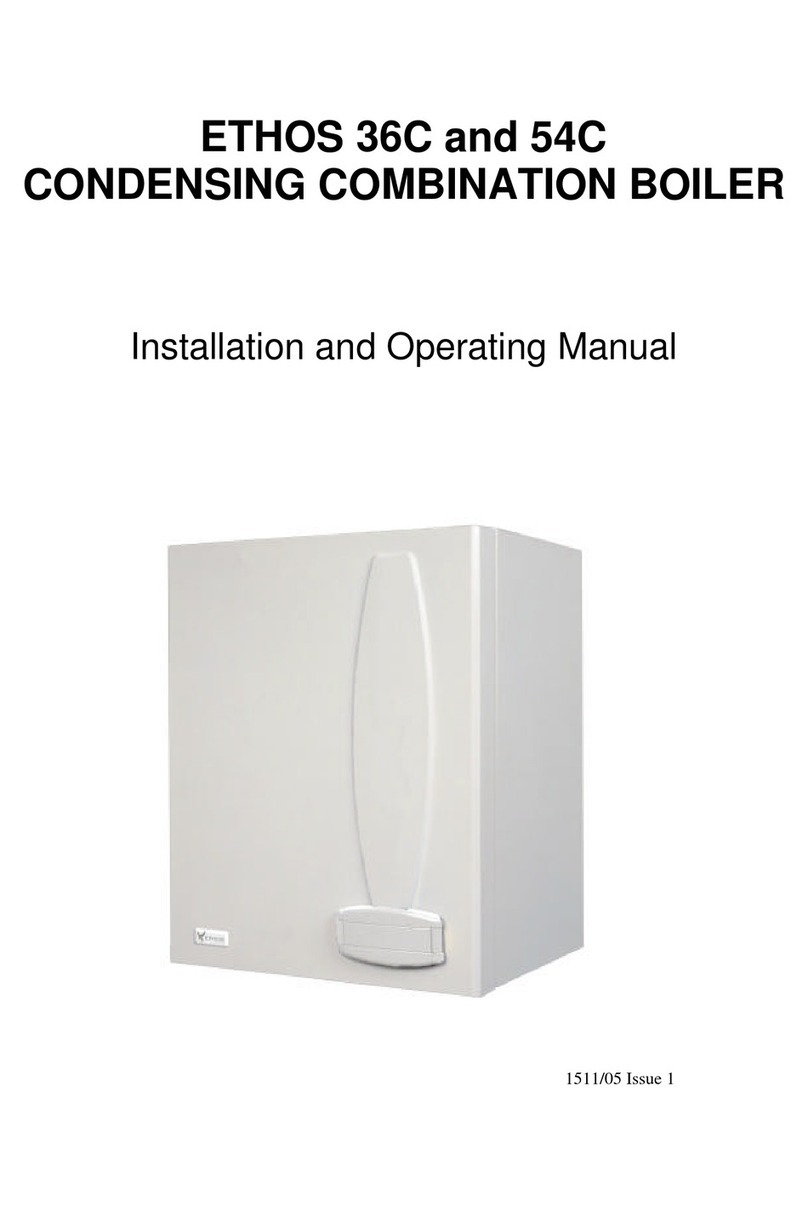
7.3. Before the heating season launch, it is also recommended to test the heating system with one and a half
working pressure.
7.4. In the forced heating system, the natural circulation of water is first checked, that is, by launching the
boiler into operation, the pump is not turned on, and the system is checked for the possibility of working
without a pump.
7.5. A safety valve (with a diameter corresponding to the boiler power) is installed on the nozzles which are
directly connected to the boiler (supply nozzle) or pipeline without intermediate shut-off systems in
accordance with the “Rules for arrangement and safe operation of steam boilers with a steam pressure of no
more than 3 kgf/cm2, water boilers and water heaters with the water heating temperature not higher than 85°C”
and instructions from the manufacturing plant attached to safety valves.
7.6. IT IS FORBIDDEN to alter the design, decorative casing and insulation of the boiler, the
dimensions and threads of the connecting pipes, to change boiler’s functions or operate it in a faulty
condition.
7.7. IT IS FORBIDDEN to break sintered coal and rock found on the grates through the charging
port due to possible damage to the grates. Sintered coal can be torn by a metal rod through the
charging port. The accumulated rock is removed only through the ashpit by an emergency shutdown
of the boiler, by cleaning without shutting down or at the end of the heating season.
8. Safety rules for installation, maintenance and operation of the boiler
8.1. It is prohibited to operate the boilers in violation of installation, maintenance and operation procedures.
8.2. Only adult personnel who are familiar with the general safety regulations of the company operating the
boiler and the safety rules for the installation and maintenance of “” boilers are allowed to maintain the boiler.
In addition, the staff must have experience and understanding of the operation of heating boilers and systems,
be aware of these instructions, as well as must know and put into practice the ways to eliminate all possible
emergencies.
8.3. The boiler is fireproof. The temperature of its outer surfaces does not exceed the normalized values,
but during its operation, the gas flue pipes and chimney are heated to a high temperature. In order to avoid
burns, the heating parts of the boiler must be insulated, and the maintenance personnel must work in a suit
made of thick fabric and gloves.
8.4. In order to avoid fire and burns during an emergency shutdown of the boiler, the boiler plant must be
equipped with fire extinguishing agents (sand, water, fire extinguishers, etc.), and the staff must have shoes on
a solid sole with a closed top.
8.5. In order to avoid a face burn, it is prohibited to remove the boiler lid when inspecting the boiler or
loading fuel into the bunker with the ashpit door open.
8.6. Do not use flammable liquids for the boiler ignition and during its operation. It is not allowed to fill
them through the loading door or in any other way in order to increase the boiler’s nominal power.
8.7. It is prohibited to store fuel behind the boiler (ashpit) or near the boiler at a distance of less than 10 m.
It is prohibited to place objects and flammable liquids on the boiler, as well as at a dangerous distance from
the boiler (less than 10 m).
8.8. When transporting the boiler, loading and unloading work, follow the general rules of accident
prevention appropriate for this type of work.
8.9. When installing the boiler follow the general rules of accident prevention when installing equipment.
In order to avoid deformation or depressurization of the boiler and its parts, it is prohibited to drop or throw
them from a height of more than 0.1 m.
8.10. In order to avoid injuries in case of falling of the installation and operating personnel, it is forbidden
to work from random objects and loose scaffolds and stairs. When non-factory-made scaffold is used as a site
for maintaining the boiler, it should be fenced.
8.11. Operating and installation personnel must have safety helmets and gloves.
8.12. In a prominent place in the boiler plant there should be an instruction developed by the company
operating the boilers, obliging the fireman to observe safety precautions, as well as defining the procedure and
actions of the fireman during emergency situations in the heating system of the enterprise.




















